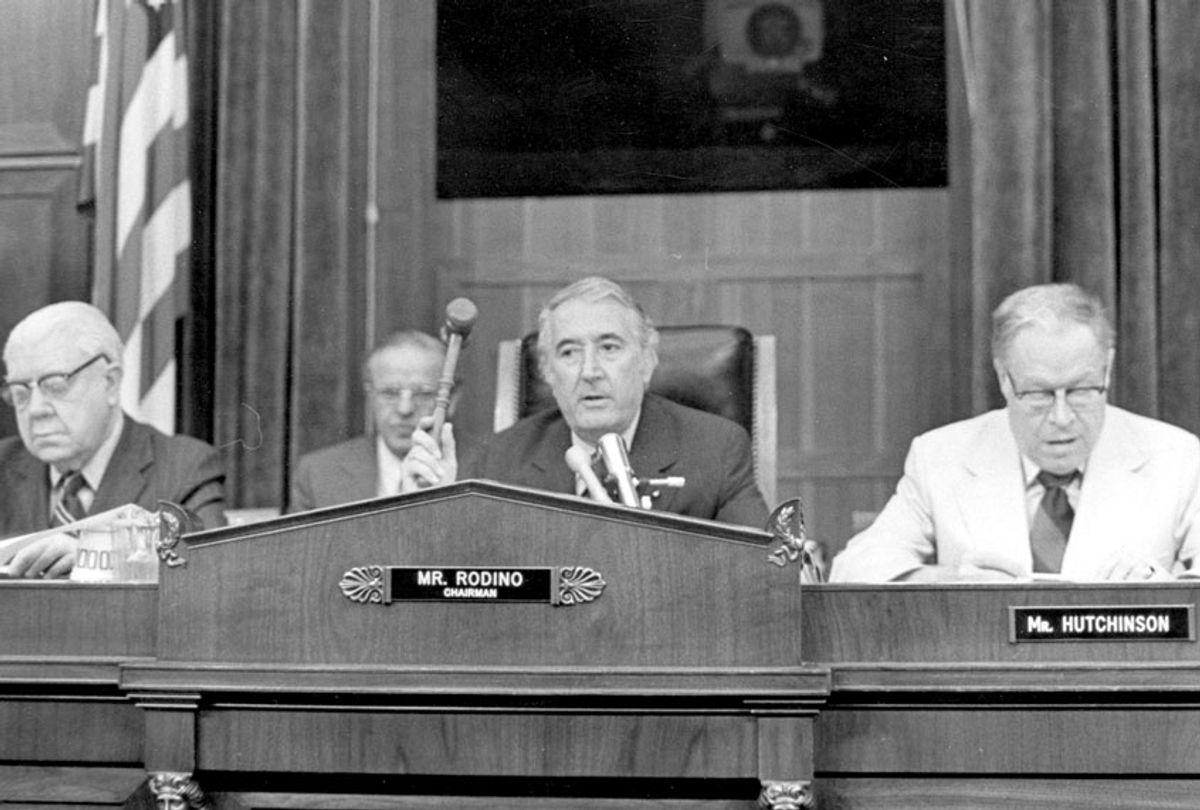What Is Obstruction in Baseball? Learn the Rules and Implications
What is an obstruction in baseball and how does it affect the game? Learn more about obstruction rules, examples and their effects in our guide.
Baseball is not only America’s pastime; it’s a sport rich with rules and intricacies that can affect the outcome of a game. Obstruction is one such rule that ensures fairness when runners navigate the bases. This infraction can lead to crucial in-game adjustments, often giving runners an advantage they would not have had otherwise.
Understanding obstruction is essential for players, coaches, and fans alike to appreciate the strategic elements of baseball and the importance of player positioning and awareness on the field. As a defensive team, avoiding obstruction calls is critical to maintaining control of the game and protecting leads.
Origins Of Obstruction In Baseball
Understand obstruction’s beginnings, we dive into early baseball history. Rules evolved to ensure fair play. Obstruction rules in baseball have their own story. Let’s explore how they started and changed over time.
Early Rules
Baseball’s infancy saw rules that were basic. They focused on preventing unfair advantages. Obstruction was one such rule. It aimed to keep the game fair for runners and fielders alike.
- Players could not block paths deliberately.
- Fielders needed to avoid hindering runners.
Evolution Of The Regulation
As the game matured, so did its rules. The definition of obstruction became clearer. New guidelines developed to protect the flow of the game.
Important changes included:
- Clear distinctions between accidental and intentional obstruction.
- Precise consequences for teams that violated the rule.
- Adjustments to keep pace with the evolving nature of baseball.

Credit: www.salon.com
Obstruction Defined
Obstruction is a rule in baseball that often confuses both new fans and seasoned spectators. To clear the air, let’s delve into what obstruction means in this beloved sport. Understanding this rule is crucial for appreciating the nuances of the game.
Legal Jargon
In the context of baseball, obstruction refers to a specific infraction. It occurs when a fielder, who is not in possession of the ball, impedes the baserunner’s path. According to the official Major League Baseball rules, there are certain criteria that define this incident:
- The fielder must not have the ball.
- The fielder must impede the runner’s progress.
- The action can be both intentional or unintentional.
Layman’s Terms
Think of obstruction like this: a runner is sprinting toward base, and a fielder, not holding the ball, stands in the way. It’s like someone blocking the aisle in the grocery store when you’re rushing to grab the last carton of eggs. In baseball, this blockage can delay or stop the runner, potentially changing the game’s outcome. When this happens, umpires will call obstruction, and here’s what may occur next:
- The runner gets a free pass to the next base.
- This rule protects the runner and keeps the game fair.
How Obstruction Differs From Interference
In the dynamic world of baseball, obstruction and interference often cause confusion among fans. Though they may seem similar, they involve different rules and different players. To put it simply, obstruction is when a defender hinders a runner, while interference occurs when an offender disturbs the fielding play. Let’s delve into the specifics of these baseball regulations.
Obstruction By Defense
Obstruction is an act done by the defense to impede a runner’s progress. When a fielder, who does not possess the ball nor is in the act of fielding the ball, gets in the way of a base runner, it’s called obstruction. Noteworthy points are:
- Fielder’s position determines if it’s obstruction.
- It protects the runner’s path between bases.
- The umpire may award bases to the runner.
Interference By Offense
If a member of the offensive team, be it a runner or a batter, hinders a defensive player’s opportunity to make a play, it is termed interference. Key highlights include:
- Batter’s actions can lead to interference.
- A runner’s contact with the ball or fielder can be interference.
- The offending player may be called out for interference.
Types Of Obstruction
Understanding Obstruction in baseball is key for both players and fans alike. It involves an impactful rule that influences gameplay. Let’s dive into its types for a clear view of the game’s nuances.
Type A Obstruction
Type A Obstruction occurs when a runner’s path to any base is impeded while a play is being made on them. It’s critical to note:
- Occurs during a play on the obstructed runner.
- Results in a dead ball situation.
- Runner is awarded at least one base beyond their position at the time of the obstruction.
Type B Obstruction
Type B Obstruction comes into play when a runner experiences interference but no play is being made. Important characteristics include:
- Obstruction happens not during a play on the runner.
- The ball remains live and play continues.
- The umpire determines and awards bases judiciously.
Identifying Obstruction
Obstruction happens when a fielder gets in the way of a baserunner. Players and fans should both be clear on the rules. Identifying obstruction is crucial for a fair game. Let’s break down how it’s spotted in a match.
Umpire’s Role in Identifying ObstructionUmpire’s Role
The umpire has a big job. They watch for any obstruction on the field. Here’s how they do it:
- Watch the play: They keep a keen eye on fielders and runners.
- Call it out: If they spot an incident, they signal obstruction.
- Make a decision: They decide the runner’s fate based on the rules.
Common Scenarios
There are typical situations where obstruction is often seen:
| Scenario | Example |
|---|---|
| Fielder Blocks Base | They’re not holding the ball but block a base. |
| Fielder in Basepath | A fielder is in the runner’s path without the ball. |
| Fielder Misleads Runner | They pretend to receive a throw, tricking the runner. |

Credit: www.wsj.com
Consequences Of Obstruction
Obstruction in baseball is a rule violation by the defense. It hinders a base runner. Outcomes are serious. They vary based on the situation.
Immediate Impact On Play
When obstruction occurs, the umpire signals immediately. The game stops. The obstructed runner gets one base at least. Umpires may award more, depending on the play. This decision helps the runner. It also protects their chance to safely reach a base.
Post-play Ramifications
After the play ends, the obstruction’s impact is assessed. Here’s what happens:
- Umpires meet to confirm the correct call.
- They decide if more bases should be awarded.
- The decision may alter the game score.
- Coaches can challenge the ruling.
Obstruction can lead to a contentious atmosphere. Both teams may dispute the decision. The defensive team may face strategic setbacks as a consequence.
Players can be disciplined if obstruction is intentional. It maintains fair play. Coaches often revisit strategies to avoid future obstructions.
Famous Obstruction Calls
Obstruction in baseball can change a game’s momentum. A player is obstructed when a fielder, who does not have the ball, hinders the runner’s path. Let’s explore some famous obstruction calls that etched their names into baseball history.
Historic Games
Here are games where obstruction calls made headlines:
- 2013 World Series, Game 3: A rare call ended the game, awarding the Cardinals a win over the Red Sox.
- 2004 ALCS, Game 6: Alex Rodriguez’s slap play resulted in an obstruction call, leading to high tensions.
- 1991 World Series, Game 7: A call against the Braves helped the Twins to secure a World Series championship.
Controversial Moments
Some obstruction calls stirred debates:
- When Chase Utley of the Dodgers interfered with Mets shortstop Rubén Tejada in the 2015 playoffs, arguments on the rule’s clarity ensued.
- In a 2001 matchup between the Giants and Marlins, a collision at home plate prompted an obstruction call, sparking a hot dispute between managers.
- The 2013 call in the World Series is still debated among fans and analysts, questioning the umpire’s judgment in crucial moments.
Training To Avoid Obstruction
Mastering the art of playing fair and safe baseball means understanding and avoiding obstruction. Players on the field must move smartly to keep the game fluent and crash-free. This skill demands continuous practice for both fielders and base runners. Proper training can significantly reduce the incidence of obstruction, ensuring a seamless game for everyone involved. Let’s dive into targeted drills and tips designed to cultivate sharp field-awareness and agile response on the diamond.
Drills For Fielders
Fielders need agility and awareness to prevent obstruction. The following drills are tailored to enhance these skills:
- “The Cone Zigzag”: Set cones in a zigzag pattern. Fielders weave quickly, keeping their eyes up.
- “Ball Roll Reaction”: Partners roll balls in unexpected directions. Fielders react to avoid the ball without creating a blockade.
- “Shadow Play”: Players mirror a partner’s movements without contact. This emphasizes spatial awareness and responsive movement.
Tips For Base Runners
Base runners should also work on perfecting their path to avoid obstruction. Here are some tips to keep in mind:
- Study Fielders: Know where the opposition stands. Anticipate their movement to avoid collisions.
- Smart Sliding: Learn varied sliding techniques. Use them to manoeuvre around potential obstruction smoothly.
- Communication is Key: Use verbal and non-verbal signals to convey intent, reducing misunderstandings on the run.
Obstruction In Youth Baseball
Learning the ins and outs of baseball is part of the fun for young players. Obstruction is a rule that often causes confusion on the diamond. Kids need to know what it means and how it can affect the game. How do you explain obstruction to a 9-year-old and why is it so crucial in youth baseball?
Teaching The Rules
Coaches and parents have the job of explaining rules in an easy way. Obstruction happens when a fielder, who doesn’t have the ball, gets in the runner’s way. It’s unfair and can lead to safe calls at the bases.
- Break it down: Use simple examples to show what counts as obstruction.
- Role-play: Act out scenarios on the field to help kids recognize obstruction.
- Quiz them: Ask quick questions during practice to keep the rules fresh in their minds.
Enforcement Challenges
Enforcing the obstruction rule in youth games can be tough. Umpires must watch carefully and make quick decisions.
| Challenge | Tip to Overcome |
|---|---|
| Inexperienced umpires | Provide rulebooks and training sessions. |
| Arguments on the field | Use clear and fair communication. |
Remember that kids are learning. Patience and practice help them understand how to play without causing obstruction.

Credit: www.umc.edu
Major League Baseball’s Take
Understanding obstruction in baseball is crucial for fans and players alike. Major League Baseball (MLB) governs how this rule applies to the sport. Let’s dive into MLB’s perspective and the finer details of the rule.
Official Statements
MLB’s official rulebook outlines the specifics of obstruction. This rule states that a fielder may not impede a runner unless actively making a play on the ball. MLB releases statements to clarify the rule when confusion arises. These statements aim to maintain fairness and the spirit of the game.
Key points from MLB’s statements:
- Protection of the runner’s path is a priority.
- Fielder positioning must be related to play.
- Updates and clarifications ensure consistent enforcement.
Rule Amendments
MLB continually revises its rulebook. Recent amendments shed light on gray areas concerning obstruction. These revisions ensure that the rule evolves with the game.
Examples of rule amendments:
- Affirming runner rights to the base path.
- Defining fielder’s allowable movements.
- Detailing umpire discretion in complex situations.
Players’ And Coaches’ Strategies
In baseball, every move counts, and this includes understanding the intricate rules of obstruction. Players’ and coaches’ strategies can significantly influence the outcome of a play. It’s crucial for teams to know how to avoid obstruction violations and possibly use the rule to their advantage. Let’s dive into the tactics employed by players and coaches to navigate this rule.
Avoiding Violations
Stay conscious of field positioning. This helps players avoid unintentional blocking of base runners. Expert teams often practice these scenarios:
- Fielders keeping a clear path to the base
- Runners sliding to avoid contact with defenders
- Catchers giving base runners access to home plate
Coaches drill their team on these maneuvers to prevent costly penalties. Knowing the boundaries can be the difference between a runner advancing or getting stuck.
Exploiting The Rule
Sometimes, smart coaches and players use the obstruction rule to gain an edge. Clever base runners may:
- Intentionally induce obstruction to claim a base
- Use the rule to create hesitation in fielders
Fielders, in turn, practice techniques to legally navigate around runners. Such tactics need to be well-practiced, since misjudgment can lead to penalties. These methods create close plays and can swing the momentum in a game.
Obstruction in baseball is as much about knowledge of the game as it is about skillful play. Mastery can be a significant strategic asset.
Fan Perceptions Of Obstruction
Baseball fans often buzz about a rare yet controversial rule: obstruction. This rule garners strong opinions from fans. Let’s dive into how fans view obstruction in baseball.
Survey Results
Recent surveys shed light on fans’ opinions about obstruction. The findings are fascinating:
- 72% of fans understand the obstruction rule.
- 65% have witnessed an obstruction call during a game.
- 58% believe the rule is fair to both teams.
Influence On Enjoyment Of The Game
Fan enjoyment is key in sports. Does obstruction affect this joy? Here’s what fans say:
| Opinion | Percentage |
|---|---|
| Enhances the game | 30% |
| No impact | 50% |
| Diminishes the game | 20% |
We see a split in views, but a majority feel obstruction calls don’t spoil the fun.
Future Of Obstruction In Baseball
As baseball evolves, so do its rules and the ways we understand fair play. Obstruction in baseball is a rule that ensures base runners can move freely. But what does the future look like for this aspect of the game?
Potential Rule Changes
As the game advances, the enforcement of obstruction might see new guidelines. Rule makers focus on game flow and player safety. Considerations include:
- Clarity in language to help players and umpires avoid confusion.
- Adjustment of penalties for obstruction to maintain fairness.
- Introduction of instant replay for close calls related to obstruction.
Technology’s Role
In recent years, technology has been pivotal in sports officiating. Baseball is no exception. Here’s what we might expect:
- More high-tech cameras positioned to capture every angle on the field.
- Real-time analysis tools to help umpires make quick and accurate decisions.
- Use of wearable tech to assess player movements and potential obstructions.
Baseball enthusiasts await these changes with anticipation. Embracing technology could make rulings on obstruction clearer, making the game fairer for all.
Frequently Asked Questions For What Is Obstruction In Baseball?
What Is The Obstruction Rule In Baseball?
The obstruction rule in baseball occurs when a fielder illegally impedes a runner’s path, potentially awarding the runner extra bases.
What’s The Difference Between Obstruction And Interference In Baseball?
Obstruction in baseball occurs when a fielder illegally impedes a runner’s path. Interference involves a player unlawfully altering the play’s natural course, often affecting the fielder’s opportunity to make an out.
Can Obstruction Of A Batter Be Ignored?
Obstruction of a batter is generally penalized in baseball, but umpires might overlook it if it doesn’t impact the play’s outcome.
Conclusion
Understanding obstruction in baseball is critical for both players and fans. It’s a rule that protects runner safety and fair play. Whether you’re on the field or cheering from the stands, recognizing this infraction ensures a deeper appreciation of the game.
Keep these insights in mind next time obstruction comes into play, and enjoy America’s favorite pastime with a well-rounded knowledge of its rules.



